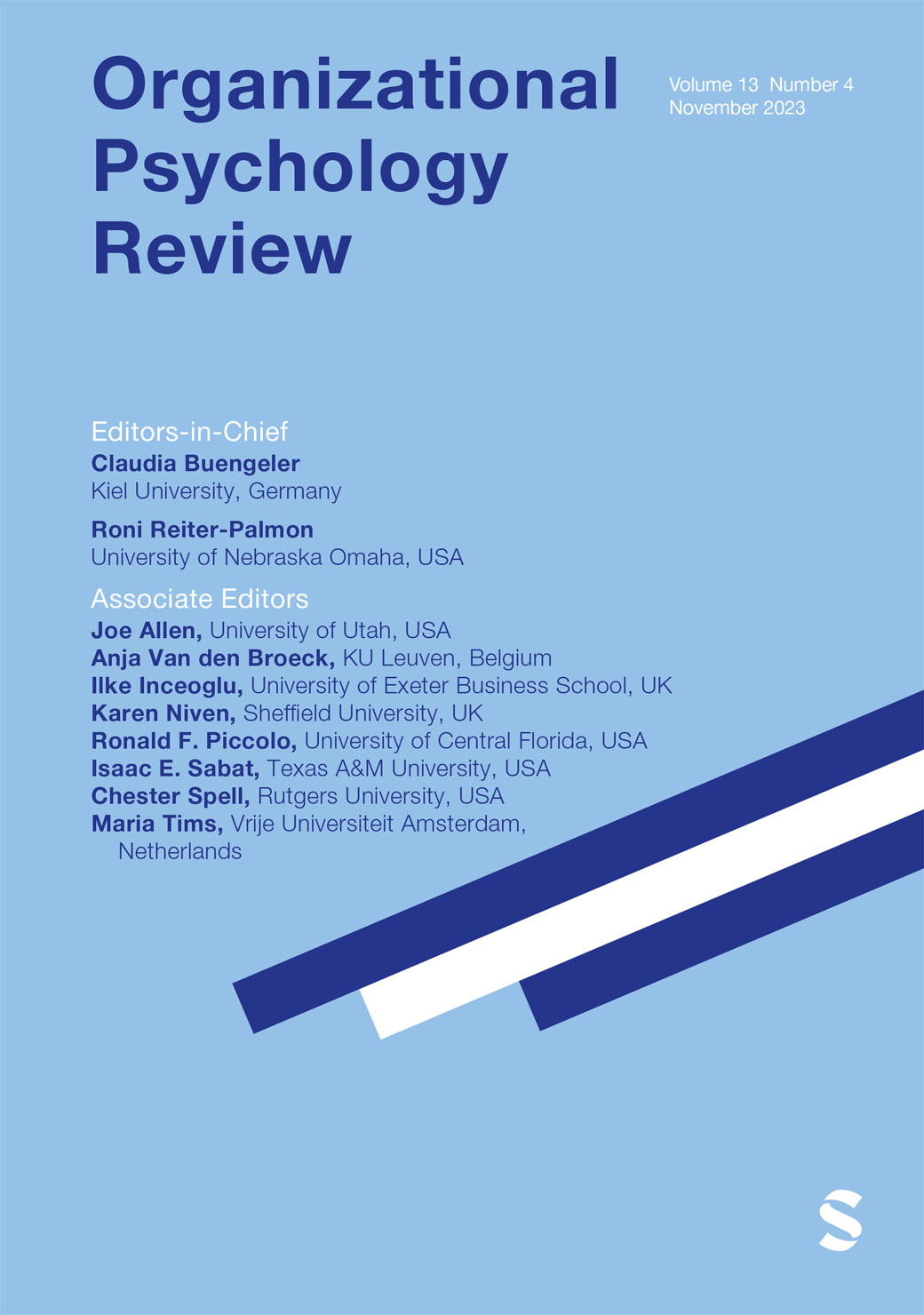Leveraging historiometry to better understand teams in context
IF 7.1
1区 心理学
Q2 MANAGEMENT
引用次数: 1
Abstract
The prevalence of teams in organizational settings has dramatically increased over the last 50 years, and as such, researchers have made much progress in understanding the conditions and intra-team dynamics that facilitate successful team performance. However, much remains to be learned due to the complexity of teams. This complexity often makes it difficult to study teams operating in context, especially when trying to examine longitudinal aspects of teams. Adding to this difficulty, studying teams in context is resource intensive and access is often a key barrier, especially if the focus is on teams that are elite or that operate in extreme environments. This drives a need to look outside the traditional methodological tools typically utilized to study teams. Thereby, the purpose of this manuscript is to highlight a method that while not typically utilized in the team literature can offer benefits when exploring team dynamics in context—historiometry.利用历史计量学来更好地理解上下文中的团队
在过去的50年里,团队在组织环境中的流行程度急剧增加,因此,研究人员在理解促进成功团队绩效的条件和团队内部动态方面取得了很大进展。然而,由于团队的复杂性,还有很多东西需要学习。这种复杂性通常使得在上下文中研究团队操作变得困难,特别是当试图检查团队的纵向方面时。增加这一困难的是,在环境中研究团队是资源密集型的,访问通常是一个关键障碍,特别是如果关注的是精英团队或在极端环境中运作的团队。这就需要跳出通常用于研究团队的传统方法工具。因此,本文的目的是强调一种在团队文献中通常不使用的方法,当在上下文历史计量学中探索团队动态时可以提供好处。
本文章由计算机程序翻译,如有差异,请以英文原文为准。
求助全文
约1分钟内获得全文
求助全文
来源期刊

Organizational Psychology Review
Multiple-
CiteScore
10.00
自引率
1.60%
发文量
25
期刊介绍:
Organizational Psychology Review is a quarterly, peer-reviewed scholarly journal published by SAGE in partnership with the European Association of Work and Organizational Psychology. Organizational Psychology Review’s unique aim is to publish original conceptual work and meta-analyses in the field of organizational psychology (broadly defined to include applied psychology, industrial psychology, occupational psychology, organizational behavior, personnel psychology, and work psychology).Articles accepted for publication in Organizational Psychology Review will have the potential to have a major impact on research and practice in organizational psychology. They will offer analyses worth citing, worth following up on in primary research, and worth considering as a basis for applied managerial practice. As such, these should be contributions that move beyond straight forward reviews of the existing literature by developing new theory and insights. At the same time, however, they should be well-grounded in the state of the art and the empirical knowledge base, providing a good mix of a firm empirical and theoretical basis and exciting new ideas.
 求助内容:
求助内容: 应助结果提醒方式:
应助结果提醒方式:


